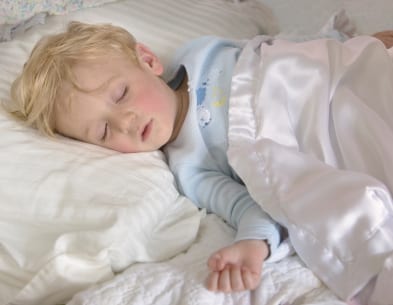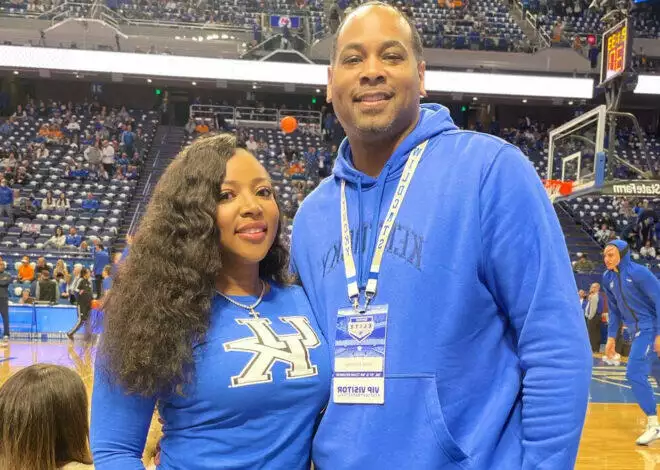The following is a guest post by Robert Greenberg, author of How to Listen to Great Music: A Guide to Its History, Culture, and Heart.
Ah, bedtime. The kids’ teeth are brushed; their pj’s are on; the book has been read, and then read again. They have been kissed goodnight. At which point begins THE BIG STALL. “I’m hungry”; “I’m thirsty”; “I need to go to the bathroom”; “I need to call my broker”; etc.
Dead Euro-composers to the rescue! It’s a moment that calls for some music, something that will calm, edify, enthrall, engage, distract, and transport the little darlings to sleepy-land, so that the adults might move off to an appropriately distant room and watch Game of Thrones.
The criteria for the most effective bedtime music are as follows. One: the music should have a steady beat. Two: the music should have a steady harmonic rhythm (meaning that the chords — the harmonies — change with a high degree of regularity). Three: the music should not include voices. Voices (and the words being sung by voices) grab and hold our attention in a manner not conducive to snoozing. Four: Generally speaking, it is best to steer clear of works for orchestra because of their greater dynamic range (meaning extremes of loud and soft) and conversely, better to stick to works for solo keyboard or chamber music.
So here is a starter list of ten works that will sooth our babies while inculcating their ears and minds with music of lasting worth. In chronological order:
1. Johann Sebastian Bach, Suites for Solo Cello.
A “suite” is a collection of dances. Bach composed six such “collections” for solo cello between 1717 and 1723. They constitute the bedrock of the 3. cello repertoire: the most frequently played solo works ever composed for the cello. Recommended recording: Janos Starker, on Mercury.
2. Johann Sebastian Bach, Goldberg Variations.
Composed in 1741, this epic work for keyboard (harpsichord or piano) consists of a theme and 30 variations, followed by a reprise of the theme. This is the most thematically “appropriate” piece on this list. It was composed for a former Russian ambassador to the electoral court of Saxony, a gent named Count Kaiserling. The Count was an insomniac, and according to legend, he commissioned the work so that his harpsichordist, named Goldberg, could play the piece when he had trouble sleeping. Recommended recording: Glenn Gould, piano, 1982 recording, on Sony.
3. Joseph Haydn, String Quartets Op. 33.
The six string quartets published together as Opus (or “work”) 33 were composed in 1781. They are works of great beauty, brevity, and expressive directness. Recommended recording: the Kodály Quartet, on NAXOS.
4. Wolfgang Mozart, Concerto for Flute and Harp.
Composed in 1778. This is, simply, one of the most ethereally beautiful works in the repertoire. Any child who is not soothed by it must cut down on her caffeine. Recommended recording: Yehudi Menuhin conducting the English Chamber Orchestra, on Virgin Classics.
5. Wolfgang Mozart, “Haydn” String Quartets.
These six string quartets — composed between 1782 and 1785 — were dedicated by Mozart to his friend and mentor Joseph Haydn; thus their nickname. They are, collectively, as good as it gets, something their dedicatee understood as well. Based on these quartets, the 52 year-old Joseph Haydn told the 29 year-old Mozart’s father Leopold that: “Before God, and as an honest man, I tell you that your son is the greatest composer known to me either in person or by name.” Recommended recording: the Talich Quartet, on Calliope.
6. Wolfgang Mozart, Piano Trios.
All together, Mozart composed five mature trios for piano, violin and ‘cello between 1786 and 1788. They are all masterworks of the first order. Recommended recording: the Beaux Arts Trio, on Philips.
7. Ludwig van Beethoven, String Quartets Op. 18 (“Early String Quartets”).
The six string quartets in this collection — elegant and lyric, though often far ahead of their time — were composed between 1798 and 1800. Recommended recording: the Alexander String Quartet, on Foghorn.
8. Johannes Brahms, Clarinet Quintet in B Minor.
This preternaturally beautiful work — scored for clarinet and string quartet — was composed near the end of Brahms’ life, in 1891. I would humbly (and happily) suggest that it is among the most perfect pieces of music ever composed. Recommended recording: Karl Leister, clarinet and the Vermeer Quartet, on Orfeo.
9. Johannes Brahms, Trio for Violin, Horn, and Piano (“Horn Trio”).
More perfection. No one should live without this piece. Once the kids are asleep listen to it for yourself! Recommended recording: Vladimir Ashkenazy, piano; Itzhak Perlman, violin; Barry Tuckwell, horn; on London.
Finally, and out of chronological order, a household favorite:
10. J. S. Bach’s Inventions and Sinfonias (“Two and Three-Part Inventions”) for harpsichord.
I have been played this music for my youngest two kids (presently aged 5 and 3) every night for nearly three years. Approximately a year-and-a-half ago I attempted to substitute something else. My daughter threatened to stage an “Occupy Oakland-style” demonstration and in doing so shut down the house for the foreseeable future. I quickly saw the error in my ways and returned the Inventions to the CD player, where they remain as I write. Recommended recording: Kenneth Gilbert, harpsichord; Archiv.
A brief rant. Certain fine and no doubt well-meaning folks have made small fortunes writing about “The Mozart Effect,” “The Bach Effect,” “The Heavy Metal Grunge Effect,” and so forth. The authors claim that by playing certain specific works by certain specific composers, our kids will be smarter, happier, and more beautiful; that they will be more likely to score well on their SAT’s, go to Princeton, get hired by Goldman Sachs, and then, when the time comes, whelp out equally perfect children themselves.
I trust we’re all aware that this is complete nonsense. The sort of music that will work best for bedtime is instrumental music with a steady beat and a steady harmonic rhythm. While this description precludes most Grunge, it does include the great bulk of instrumental music composed in Europe between roughly 1700 and 1800, and much of the instrumental music written to the late 1800’s. Now, it just so happens that the years between 1700 and 1800 was the era of both Johann Sebastian Bach and Wolfgang Mozart. But it was also an era — spanning what’s known as the High Baroque and the Classical era — of hundreds of other worthy composers, whose music will just as assuredly put Missy and Junior to sleep as will the music of Bach and Mozart.
So be secure in the knowledge that the music of Corelli, Torelli, Vivaldi, and Spumoni (okay, just joking about that last one); Handel, J.C. Bach, C.P.E. Bach, W. F. Bach (the latter three all sons of Johann Sebastian); Telemann, Haydn, and Carl Ditters von Dittersdorf (no joking about that one) will work at bedtime just as well as J. S. Bach and W. Mozart, and will probably improve the kids’ GRE’s as well.
Robert Greenberg, author of How to Listen to Great Music: A Guide to Its History, Culture, and Heart, is a speaker, pianist, and music historian. He has served on the faculties of UC Berkeley, California State University East Bay, and the San Francisco Conservatory of Music, where he was chairman of the Department of Music History and Literature and director of the Adult Extension Division. He is currently music historian-in-residence with San Francisco Performances and also serves as the resident composer and music historian to NPR’s Weekend All Things Considered. Since 1993, he has recorded over 550 lectures for The Great Courses. For more information please visit http://www.robertgreenbergmusic.com, and http://www.thegreatcourses.com and follow the author on Facebook.





